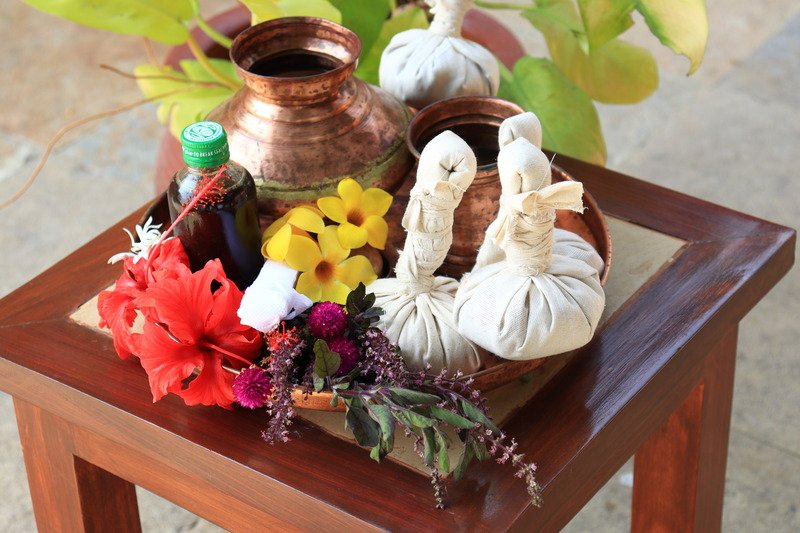
In Ayurveda, life is deeply interconnected with the forces of nature, especially time (Kala), which governs creation, sustenance, and dissolution. These principles are embodied in the concept of “Navadravyas,” or the nine aspects of existence, including the five elements (Panchamahabhootas), direction (Dik), time (Kala), consciousness (Atma), and mind (Manas). Among these, Kala plays a pivotal role, influencing daily routines, seasonal changes, and the aging process.
As we approach the New Year and the auspicious Mahakumbh 2025, join our Shirshira Ritu Paricharya (Regime for Late Winter), where we’ll share step-by-step Ayurvedic practices to guide you through seasonal transitions and prepare for the Mahakumbh.
The Six Seasons According to Ayurveda
Ayurveda identifies six primary seasons, each with distinct characteristics:
| Ritu (Season) | Gregorian Month | Based on Sun’s Movement | Hindu Lunar Month |
| Shishira (Winter) | Mid-January to mid-March | Uttarayana (Northern Solstice) | Magha & Phalguna |
| Vasanta (Spring) | Mid-March to mid-May | Uttarayana (Northern Solstice) | Chaitra & Vaishakha |
| Grishma (Summer) | Mid-May to mid-July | Uttarayana (Northern Solstice) | Jyeshtha & Ashadha |
| Varsha (Monsoon) | Mid-July to mid-September | Dakshinayan (Southern Solstice) | Shravana & Bhadrapada |
| Sharad (Autumn) | Mid-September to mid-November | Dakshinayan (Southern Solstice) | Ashvina & Kartika |
| Hemanta (Early Winter) | Mid-November to mid-January | Dakshinayan (Southern Solstice) | Margashira & Pausha |
Each season uniquely affects the body, and Ayurveda’s Ritucharya helps us adapt to these changes through adjustments in diet, lifestyle, and daily habits.

Shishira Ritu (Winter)
The Shishira season (mid-January to mid-March) marks the final phase of winter, characterized by cold, dry, and windy conditions. During this time, the cold strengthens the body’s Agni (digestive fire), prompting cravings for rich, heavy foods. The transition to Uttarayana begins with the Winter Solstice (December 21st), which brings longer days and renewed energy, with Sankranti on January 14th marking the sun’s shift and the beginning of more sunlight.

During this season, Ayurveda recommends the following practices for a smooth transition:
- Diet: Shift from heavy, rich foods to lighter, more digestible meals. Focus on seasonal fruits and vegetables, and emphasize pungent, bitter, and astringent tastes, while avoiding sweet, salty, and sour flavors.
- Clothing: Gradually transition from warm woolens to lighter cotton fabrics, while continuing to protect sensitive areas (head, ears, feet) from residual cold.
- Lifestyle: Engage in moderate physical activity to combat sluggishness and maintain flexibility. Regular oil massages with Mahanarayana Tailam or Dhanwantaram Tailam nourish the skin, enhance flexibility, and support the body’s seasonal transition.
The Mahakumbh 2025: Aligning with Nature’s Rhythms
The Mahakumbh Mela, from January 13 to February 26, 2025, coincides with Uttarayana and the celebration of Makar Sankranti. This celestial event, marked by the sun’s transition into the zodiac sign of Capricorn (Makara), heralds the start of the sun’s six-month northward journey, which is considered highly auspicious for spiritual practices and personal growth. Sankranti also marks the return of longer days and increasing warmth, symbolizing the end of winter’s deep cold.
This celestial shift brings about changes in the seasons:
- Shishira (Winter) gradually gives way to Vasanta (Spring), bringing milder temperatures and a slow departure from winter’s harshness.
- The lengthening daylight begins to influence human physiology and nature, boosting energy levels and encouraging new growth.
For pilgrims traveling to Prayagraj for the Mahakumbh, these transitions provide an ideal environment for spiritual practices like snana (holy bathing), which is central to the Kumbh Mela experience.

Ayurvedic Ritucharya for the Mahakumbh
To maintain balance and well-being during these seasonal and celestial shifts, Ayurveda suggests following Ritucharya—seasonal regimens that help the body harmonize with nature’s rhythms. During Sankranti and the Mahakumbh pilgrimage, these practices can support both physical and mental health:
- Oil Application: Regular warm oil massages protect against the cold and dryness of winter.
- Turmeric Milk: Drinking warm milk infused with turmeric and black pepper boosts immunity and helps prevent colds.
- Ayurvedic Remedies: Carry Vyoshadi Vatakam to manage coughs and colds during travel. Apply Anu Thailam to the nostrils to protect against airborne diseases.
- Warm Water & Herbal Brews: Stay hydrated with warm water and herbal teas made from holy basil, cinnamon, and pepper to support digestion and keep the body warm.
By aligning with nature’s rhythms through Ritucharya, you can enhance your health and vitality, allowing for a fulfilling spiritual experience at Mahakumbh 2025.
Register for the Mahakumbh 2025 here.
Conclusion
Ayurveda’s Ritucharya emphasizes the importance of aligning with seasonal cycles to maintain physical and mental balance. The Ritu Sandhi—particularly during significant spiritual events like the Mahakumbh—offers a powerful opportunity to attune to nature’s rhythms. Adjusting your lifestyle, diet, and habits to accommodate these seasonal and celestial transitions ensures enhanced well-being and spiritual fulfillment.
Join our Shirshira Ritu Paricharya (Regime for Late Winter), for daily tips, videos, and guides to help you smoothly navigate these seasonal shifts and prepare for the New Year 2025!
